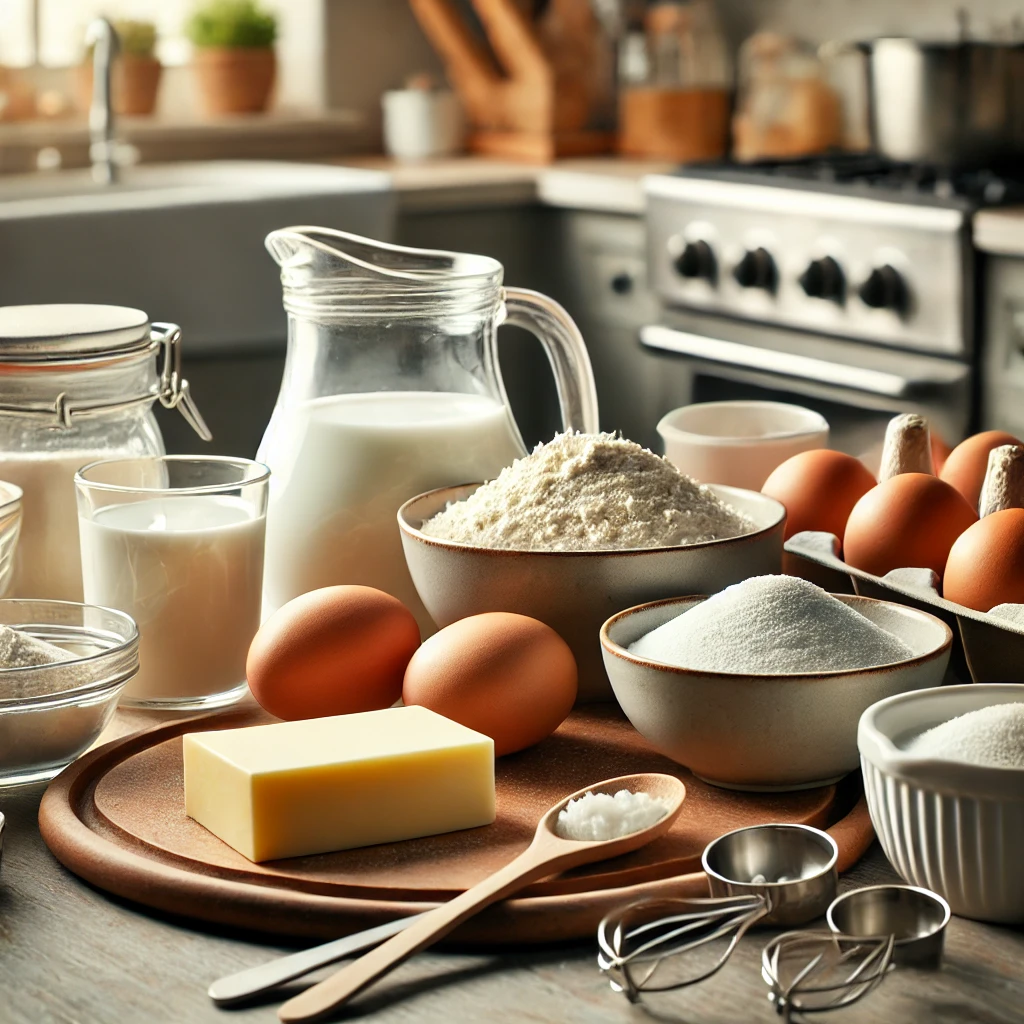Introduction
Baking is both an art and a science. While it allows for creativity, understanding the science behind the ingredients can make a significant difference in your baking outcomes. This post delves into the role of key ingredients in baking, helping you achieve perfect results every time.
Ingredients and Their Roles
1. Flour Flour is the backbone of many baked goods, providing structure and stability. The protein content in flour forms gluten when mixed with water, giving baked goods their shape and texture. Different types of flour (all-purpose, bread, cake, and pastry flour) have varying protein levels, affecting the final product.
2. Sugar Sugar adds sweetness and flavor but also plays a crucial role in the texture and color of baked goods. It helps to tenderize by absorbing water and slowing down gluten formation. Additionally, sugar caramelizes during baking, contributing to browning and enhancing the overall appearance.
3. Eggs Eggs provide structure, leavening, color, and flavor to baked goods. The proteins in eggs coagulate when heated, helping to set the structure. Eggs also trap air when beaten, aiding in leavening. Yolks add richness and color, while whites can create a light and airy texture.
4. Fats Fats (such as butter, oil, and shortening) add moisture, tenderness, and flavor to baked goods. They coat the flour proteins, preventing excessive gluten formation and resulting in a tender crumb. The type of fat used can significantly affect the texture and taste of the final product.
5. Leavening Agents Leavening agents, including baking powder, baking soda, and yeast, are responsible for the rise in baked goods. Baking powder and baking soda release carbon dioxide gas when combined with moisture and an acid, causing the dough or batter to expand. Yeast ferments sugars, producing carbon dioxide and ethanol, leading to the rising of bread and other yeast-based products.
6. Liquids Liquids (such as water, milk, and juice) hydrate the dry ingredients, dissolve sugar and salt, and activate leavening agents. The amount and type of liquid used can affect the texture, moisture level, and flavor of the baked goods.
7. Salt Salt enhances the flavor of baked goods and strengthens the dough by tightening the gluten structure. It also helps control yeast fermentation, preventing overly rapid rise and improving the final texture.
8. Flavorings and Add-ins Flavorings (such as vanilla extract, cocoa powder, and spices) and add-ins (like nuts, fruits, and chocolate chips) enhance the taste and texture of baked goods. They provide unique flavors and textures, making each recipe distinct.
Tips for Successful Baking
- Measure Accurately: Use proper measuring tools and techniques to ensure accuracy. Baking is a precise science, and even small deviations can affect the final product.
- Understand Ingredient Functions: Knowing the role of each ingredient helps in making substitutions and adjustments when needed.
- Follow the Recipe: Especially for beginners, following the recipe precisely ensures the best results. Once you understand the basics, you can start experimenting.
- Control the Environment: Baking conditions, such as oven temperature and humidity, can affect the outcome. Preheat your oven and use an oven thermometer for accuracy.
Conclusion
Understanding the science behind baking ingredients empowers you to create consistently delicious baked goods. By knowing how each component interacts and contributes to the final product, you can troubleshoot problems, make informed substitutions, and elevate your baking skills. Happy baking!


